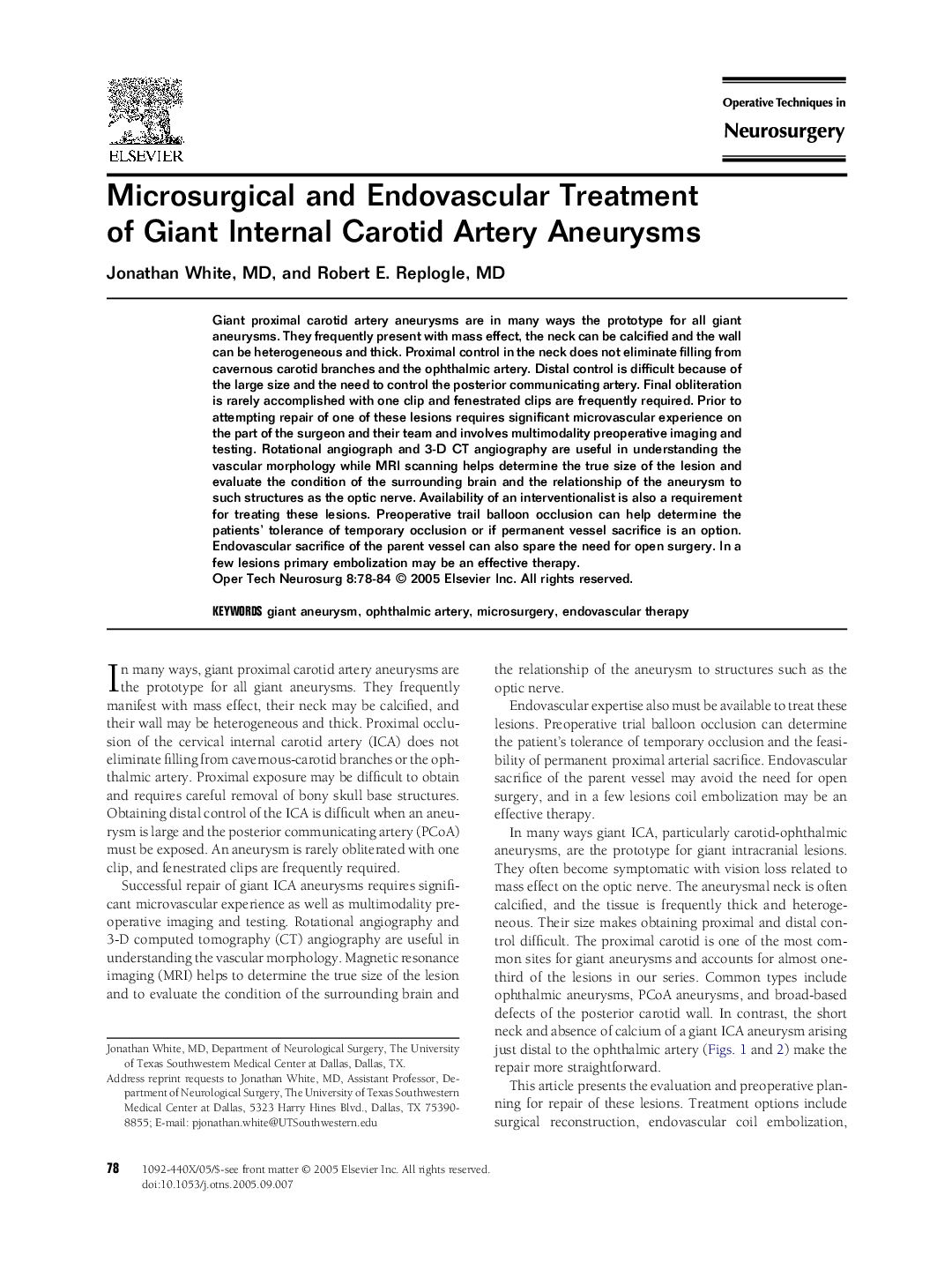| Article ID | Journal | Published Year | Pages | File Type |
|---|---|---|---|---|
| 9201508 | Operative Techniques in Neurosurgery | 2005 | 7 Pages |
Abstract
Giant proximal carotid artery aneurysms are in many ways the prototype for all giant aneurysms. They frequently present with mass effect, the neck can be calcified and the wall can be heterogeneous and thick. Proximal control in the neck does not eliminate filling from cavernous carotid branches and the ophthalmic artery. Distal control is difficult because of the large size and the need to control the posterior communicating artery. Final obliteration is rarely accomplished with one clip and fenestrated clips are frequently required. Prior to attempting repair of one of these lesions requires significant microvascular experience on the part of the surgeon and their team and involves multimodality preoperative imaging and testing. Rotational angiograph and 3-D CT angiography are useful in understanding the vascular morphology while MRI scanning helps determine the true size of the lesion and evaluate the condition of the surrounding brain and the relationship of the aneurysm to such structures as the optic nerve. Availability of an interventionalist is also a requirement for treating these lesions. Preoperative trail balloon occlusion can help determine the patients' tolerance of temporary occlusion or if permanent vessel sacrifice is an option. Endovascular sacrifice of the parent vessel can also spare the need for open surgery. In a few lesions primary embolization may be an effective therapy.
Related Topics
Health Sciences
Medicine and Dentistry
Clinical Neurology
Authors
Jonathan MD, Robert E. MD,
